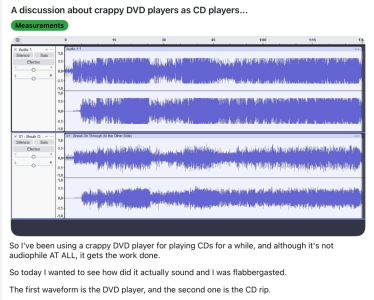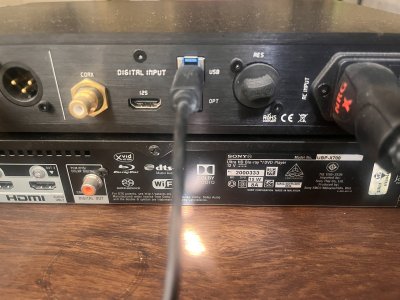The effect of transport is minimized or eliminated. The exact readout rate from the disc is unimportant since
every CD player/transport necessarily buffers the data and sends to the DAC/output under the control of a crystal oscillator. The rotation of the disc is controlled such that the average data rate into the decoding stage is within the bounds set by the buffer. The quality theoretically should depend on the DAC. So If you have a good DAC use the SPDIF out.
CD players buffer the audio data before sending it out via SPDIF (S/PDIF). This is because the CD player's read-out rate from the disc is variable, while the SPDIF output is driven by a crystal oscillator, which maintains a stable, constant clock rate. The buffer ensures a consistent data stream is sent out, regardless of the disc's fluctuating read-out rate.
Here's why buffering is important:
- Synchronization:
The SPDIF interface requires a stable clock signal to transmit the audio data. The CD player's internal clock may not be perfectly synchronized with the read-out rate of the disc, so a buffer helps to smooth out any fluctuations and provide a consistent clock signal to the SPDIF output.
- Error Correction:
The buffer also helps with error correction. If there are any errors in the disc's data, the buffer can store the data and then retransmit it, ensuring a clean digital signal is sent out via SPDIF.
- Clocking:
Good CD player designs can use an accurate external clock source for the SPDIF output, further improving the quality and stability of the digital audio signal



